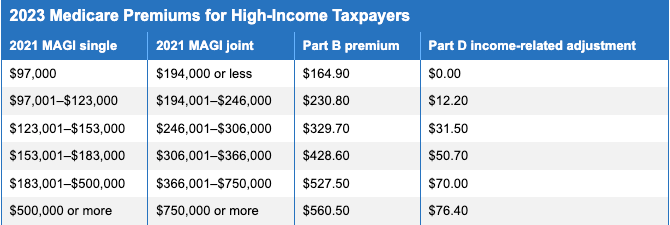How to Get Tax Savings on Charitable Contributions
Qualified Charitable Distributions From an IRA Provide Individuals Over 70½ With a Way To Receive Income Tax Savings on Charitable Gifts—Even if They Decide To Take the Newly Increased Standard Deduction.
The Tax Cut and Jobs Act (TCJA)
The number of individuals who claimed charitable deductions on their taxes fell below 70% for the fourth consecutive year, according to "Giving USA 2022: The Annual Report on Philanthropy." So what happened?
This decline is mainly the result of the Tax Cut and Jobs Act (TCJA) of 2017. The Tax Policy Center had estimated that the law would cut the number of households itemizing deductions from about 37 million in 2017 to 16 million in 2018.
The TCJA made many changes, but the two most critical ones in terms of charitable giving are (1) limiting the itemized tax deduction for state and local taxes (SALT) to $10,000 per return and (2) increasing the standard deduction drastically, from $6,350 in 2017 to $13,850 in 2023 for individuals and from $12,700 to $27,700 for married couples filing joint returns. These changes make it much more beneficial for most taxpayers to take the standard deduction (as opposed to itemizing their deductions); this switch will cause an estimated 90% of taxpayers to take the standard deduction in years to come.
The increased use of the standard deduction disincentivizes charitable contributions, as taxpayers often will not get deductions for them. Think tank AEI reports, "Many taxpayers who otherwise would have deducted their charitable donations as itemizers will now claim the standard deduction and not receive a tax incentive for charitable giving."
Thankfully, there is good news for those over 70½ who want to donate to charity and still obtain tax relief; there were no changes to the law permitting those over 70½ to make charitable gifts from their retirement accounts (specifically their IRA) directly to the charity of their choice, without recognizing taxable income. These individuals are still eligible for a tax break for donating, even if they take the standard deduction.
It is called a qualified charitable distribution (or QCD), defined by the IRS as "an otherwise taxable distribution from an IRA…owned by an individual aged 70½ or over that is paid directly from the IRA to a qualified charity." QCDs allow you to donate up to $100,000 annually from your retirement accounts, more than enough for most taxpayers.
Why QCDs Have Become More Useful
2017 (with its contingent increase in the standard deduction) has made them much more relevant for the foreseeable future. From this point on, it will be much more beneficial for those who take the standard deduction to use their IRA to make charitable gifts. For example, by using a QCD, an individual can make a charitable contribution from her IRA and apply the gift to satisfy her required minimum distribution for the year—but she will pay no income tax on the IRA distribution since the money goes directly to a charity.
It works because the law permits those over 70½ to make charitable gifts directly from their IRAs to eligible charities and excludes the distributions from their gross income (required minimum distributions do not begin until age 73/75, depending on birth year). This strategy hasn't been as widely used in the past because there was no itemized charitable income tax deduction for such an IRA gift; thus, it made more sense for those who itemized to donate to charity and then deduct the donation. However, since almost everyone will take the increased standard deduction in years to come, QCDs have become much more helpful to the typical donor.

But Wait, There’s More!
QCDs may also provide a double benefit—they can potentially reduce Medicare premiums. High-income earners can see their Medicare premiums increase by thousands of dollars each time their income rises just $1 above any of the multiple predetermined income levels. A QCD can reduce premiums in future years for a couple in their 70s whose income exceeds the Medicare income threshold levels.
Take a couple making a combined $245,000 per year. If their last withdrawal from their IRA put their modified adjusted income over the threshold of $247,000, the couple's Medicare premiums would spike drastically, increasing by over $2,500 for one year. However, if they make a $5,000 charitable donation through a QCD, their modified adjusted gross income is lowered by $5,000, taking it from $245,000 to $240,000. In turn, their Medicare premiums will potentially lower, saving them up to $2,500 per year. (Your Medicare premiums are based on tax returns from two years prior.)
Technical QCD Requirements
When making a QCD, you must meet some technical requirements to ensure that the contribution qualifies for special treatment.
- The QCD check must be payable directly to the charity from the IRA account; it can't be distributed to the taxpayer first and then donated later.
- However, if the IRA owner has check-writing privileges on their traditional IRA, they might be able to write the check directly to the charity itself.
- The charity must be a 501(c)(3) organization, meaning private foundations and donor-advised funds don't qualify for the QCD.
- Be sure to check with the IRA custodian to see if any other requirements or forms are necessary to make a successful QCD.
While QCDs have been a niche strategy in the past, enacting the TCJA has brought them into the spotlight and will make them much more helpful to taxpayers going forward. Those taking the standard deduction and are over 70½ but still want a tax break for donating to charity can use a QCD to give money directly from their IRA to a charity of their choice, killing two birds with one stone. And, if they are strategic with that donation, they might even get some Medicare-premium relief as well!

Work With Clayton Financial Group
At Clayton Financial Group, we help our clients achieve their plans for life and take their growth and security seriously. We are an independent boutique advisory firm with national coverage and decades of industry experience.
If you're looking for help with investment planning, tax planning, risk management, estate planning, and more, look no further: let's connect today.



Find Out If We Are The Right Fit For You
Start the journey to financial peace-of-mind for you and your family. Let’s Talk.
Contact Us
Thank you for contacting us.
We will get back to you as soon as possible.
Please try again later
Contact Info
165 N Meramec Ave, Suite 130
Clayton, MO 63105
All Rights Reserved | Clayton Financial Group








